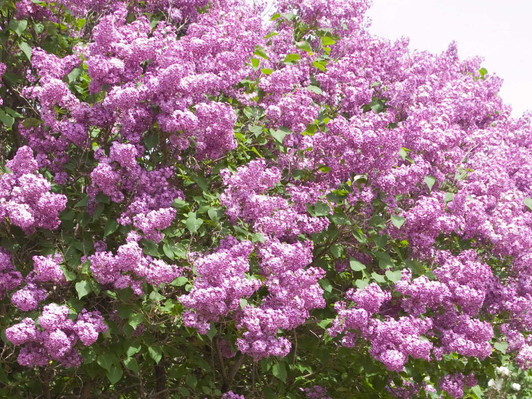Lilac, Bloomerang Dwarf Purple
Proven Winners
Info
Description
Bloomerang® Dwarf Purple Syringa x 'SMNJRPU' USPP 29,831,CPBRAF
Reblooming Lilac
Everything you want in a lilac, and more!
Think you don't have room for a lilac? Think again! Bloomerang® Dwarf Purple lilac naturally grows as a small, rounded shrub, at just about a third the size of conventional lilacs. It outperforms other lilacs with its perfectly purple blooms that cover the plant in late spring, then reappear throughout summer and fall. Plus, it's vigorous and resistant to disease. Just plant it in full sun, soil that's not too wet, and enjoy the show for years to come. Available in better garden centers in spring 2019.
Top reasons to grow Bloomerang® Dwarf Purple lilac:
- Dwarf habit takes up just a fraction of the space of other lilacs.
- Fragrant purple flowers for months every year.
- Rarely bothered by deer or disease.
- 30-36 inches H
- 30-36 inches W
- Upright habit
- Blooms on new wood and old wood
- Full Sun preferred
- Attracts Butterflies, Hummingbirds
- Deer resistant
- Performs in alkaline soils
- Zone 3-7
Maintenance Notes:
Plant in full sun and well-drained soil; lilacs cannot tolerate soggy, wet conditions.
The rebloom of Bloomerang lilac occurs on the new growth the plant creates after its spring bloom. For the best rebloom, it's vital that the plant grows vigorously during late spring and early summer. Do this by keeping it well-watered and mulched and in plenty of sun (six hours a day at least). If you wish to fertilize it, you may do so in early spring, once the ground has thawed, and again in late spring, after it blooms.
If you want to prune Bloomerang lilac, do so immediately after its spring bloom. Never cut it back in fall, winter, or early spring - doing so will remove the spring flower buds. It is not necessary to prune Bloomerang lilac in order for it to rebloom. However, giving it a light trim after blooming does remove the developing seed heads (they look like green bananas, and some people don't care for the way they look on the plant), providing a neater look, and encourages more new growth for reblooming. Trimming after blooming will delay the rebloom by a few weeks compared to an untrimmed Bloomerang lilac.
Like nearly all lilacs, Bloomerang lilac actually requires a period of cold weather in order to bloom well. This is why lilacs are not typically suited to warmer climates. However, they are very, very cold tolerant and thrive in climates as cold as USDA zone 3.









